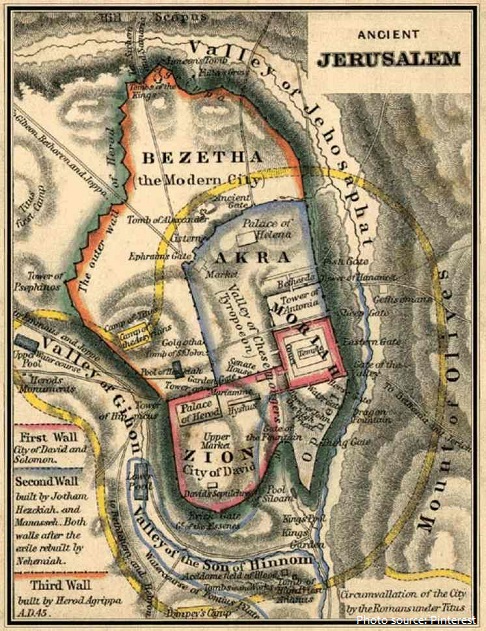
Jerusalem is the largest city in Israel.
It is situted on a plateau in the Judaean Mountains between the Mediterranean and the Dead Sea.
As of March 2021, the population of Jerusalem is about 950,000 people.
The city covers a total area of 125 square kilometers (48 square miles).
The average altitude is 754 metres (2,474 feet) above sea level.
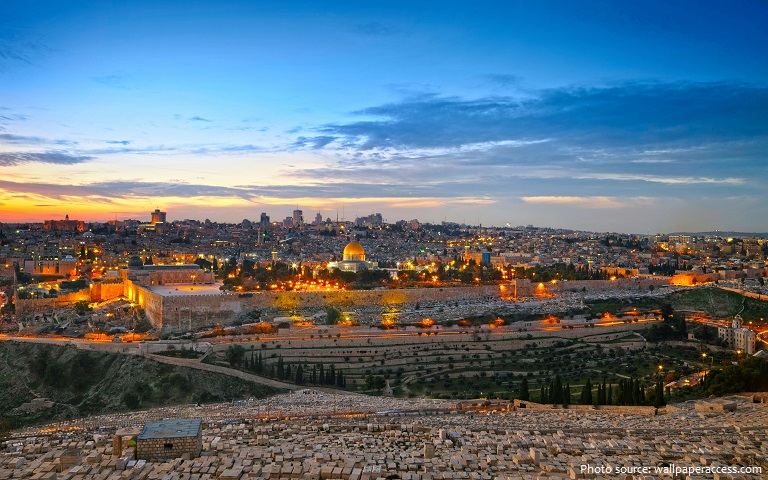
It is one of the oldest cities in the world, and is considered holy to the three major Abrahamic religions—Judaism, Christianity, and Islam.
Throughout its long history, Jerusalem has been destroyed at least twice, besieged 23 times, captured and recaptured 44 times, and attacked 52 times.
The part of Jerusalem called the City of David shows first signs of settlement in the 4th millennium BC, in the shape of encampments of nomadic shepherds.
In the Canaanite period (14th century BC), Jerusalem was named as Urusalim on ancient Egyptian tablets, probably meaning “City of Shalem” after a Canaanite deity.
According to the Bible, King David conquered the city from the Jebusites and established it as the capital of the united kingdom of Israel, and his son, King Solomon, commissioned the building of the First Temple.
During the Israelite period, significant construction activity in Jerusalem began in the 9th century BC (Iron Age II), and in the 8th century the city developed into the religious and administrative center of the Kingdom of Judah.
The Babylonians occupied Jerusalem in 586 BC, destroyed the Temple, and sent the Jews into exile. About 50 years after that, the Persian King Cyrus allowed Jews to return to Jerusalem and rebuild the Temple.
Alexander the Great took control of Jerusalem in 332 B.C. Over the next several hundred years, the city was conquered and ruled by different groups, including the Romans, Persians, Arabs, Fatimids, Seljuk Turks, Crusaders, Egyptians, Mamelukes and Islamists.

In 1538, the city walls were rebuilt for a last time around Jerusalem under Suleiman the Magnificent.
After World War I, Great Britain took over Jerusalem, which was part of Palestine at the time. The British controlled the city and surrounding region until Israel became an independent state in 1948.
Jerusalem was divided during the first 20 years of Israel’s existence. Israel controlled the Western portions of it, while Jordan controlled East Jerusalem. After the 1967 Six-Day War, Israel seized all of Jerusalem.
The Old City became a World Heritage Site in 1981, and is on the List of World Heritage in Danger.
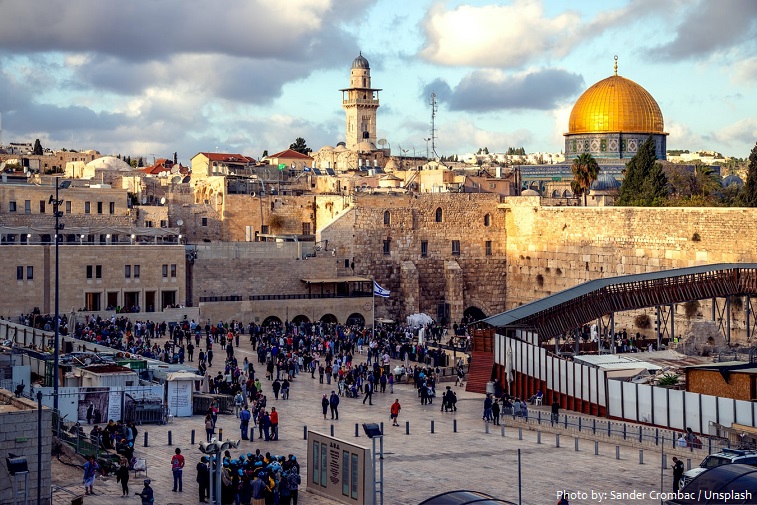
Today, the status of Jerusalem remains one of the core issues in the Israeli–Palestinian conflict.
The Temple Mount known to Muslims as the Haram esh-Sharif and the Al Aqsa Compound, is a hill located in the Old City of Jerusalem that for thousands of years has been venerated as a holy site in Judaism, Christianity, and Islam alike. The present site is a flat plaza surrounded by retaining walls (including the Western Wall) which was built during the reign of Herod the Great for an expansion of the temple. The plaza is dominated by three monumental structures from the early Umayyad period: the al-Aqsa Mosque, the Dome of the Rock and the Dome of the Chain, as well as four minarets. Herodian walls and gates, with additions from the late Byzantine and early Islamic periods, cut through the flanks of the Mount. Currently, it can be reached through eleven gates, ten reserved for Muslims and one for non-Muslims, with guard posts of Israeli police in the vicinity of each.
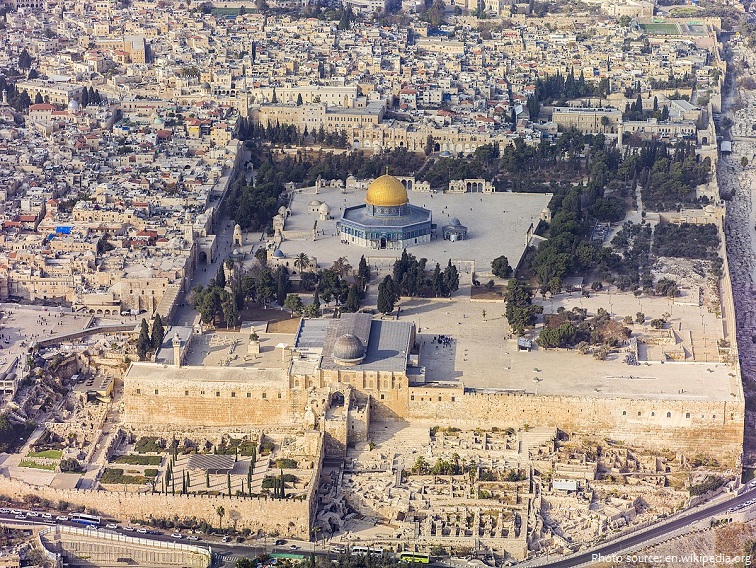
The Wailing Wall (as it is known in the West) or Western Wall, known in Islam as the Buraq Wall is an ancient limestone wall in the Old City of Jerusalem. It is a relatively small segment of a far longer ancient retaining wall, known also in its entirety as the “Western Wall”. The wall was originally erected as part of the expansion of the Second Jewish Temple begun by Herod the Great, which resulted in the encasement of the natural, steep hill known to Jews and Christians as the Temple Mount, in a huge rectangular structure topped by a flat platform, thus creating more space for the Temple itself, its auxiliary buildings, and crowds of worshipers and visitors.
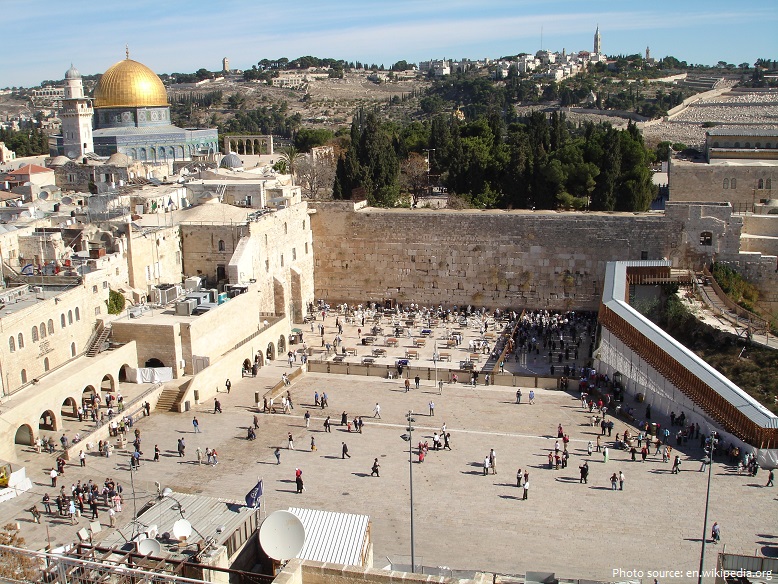
The Church of the Holy Sepulchre is a church in the Christian Quarter of the Old City of Jerusalem. The church contains, according to traditions dating back to at least the fourth century, the two holiest sites in Christianity: the site where Jesus was crucified, at a place known as Calvary or Golgotha, and Jesus’s empty tomb, where he was buried and resurrected. The tomb is enclosed by a 19th-century shrine called the Aedicula. The Status Quo, an understanding between religious communities dating to 1757, applies to the site.
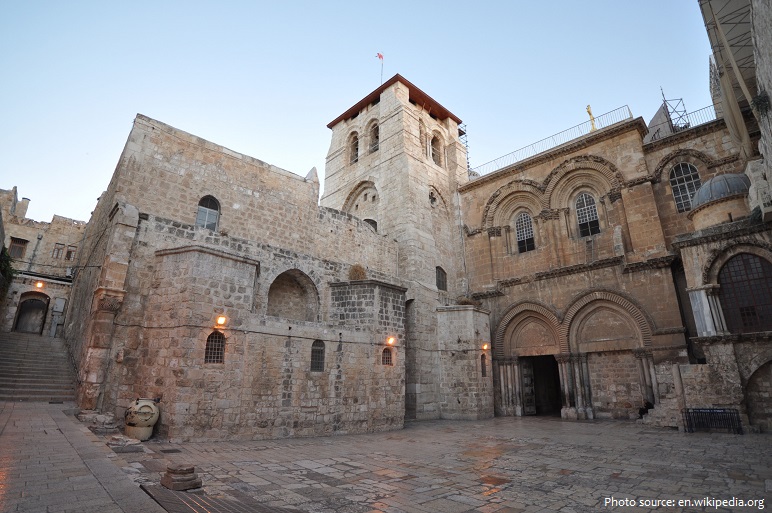
The Via Dolorosa (Latin for “Sorrowful Way”, often translated “Way of Suffering”) is a processional route in the Old City of Jerusalem, believed to be the path that Jesus walked on the way to his crucifixion. The winding route from the former Antonia Fortress to the Church of the Holy Sepulchre — a distance of about 600 metres (2,000 feet) — is a celebrated place of Christian pilgrimage. The current route has been established since the 18th century, replacing various earlier versions. It is today marked by nine Stations of the Cross; there have been fourteen stations since the late 15th century, with the remaining five stations being inside the Church of the Holy Sepulchre.
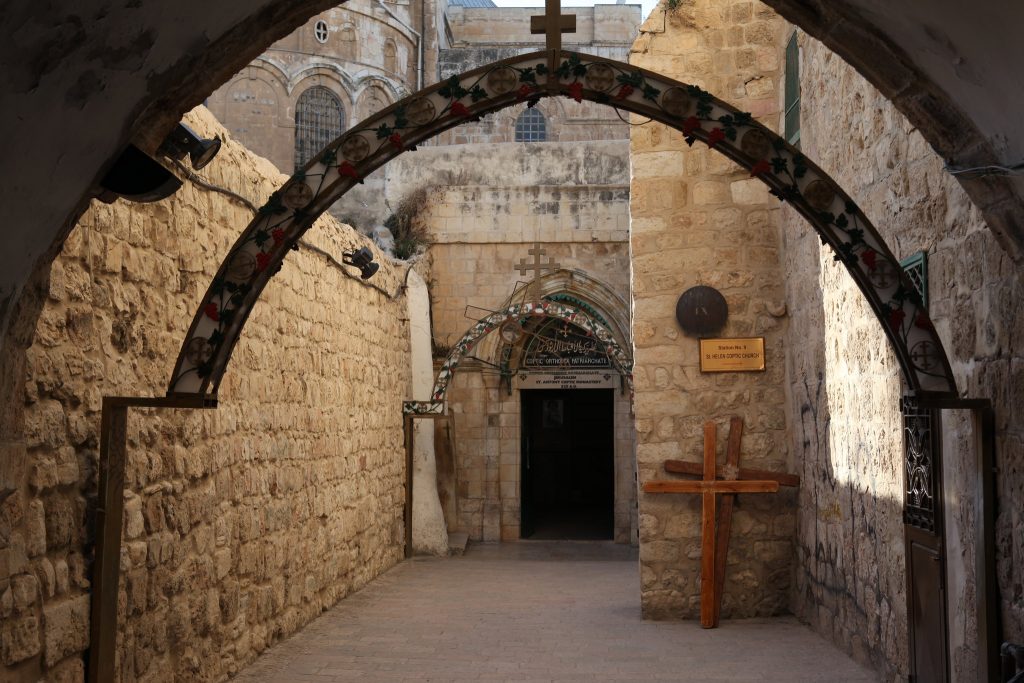
The Dome of the Rock is an Islamic shrine located on the Temple Mount in the Old City of Jerusalem. It was initially completed in 691–92 CE at the order of Umayyad Caliph Abd al-Malik during the Second Fitna on the site of the Second Jewish Temple, destroyed during the Roman Siege of Jerusalem in 70 CE. The original dome collapsed in 1015 and was rebuilt in 1022–23. The Dome of the Rock is in its core one of the oldest extant works of Islamic architecture.
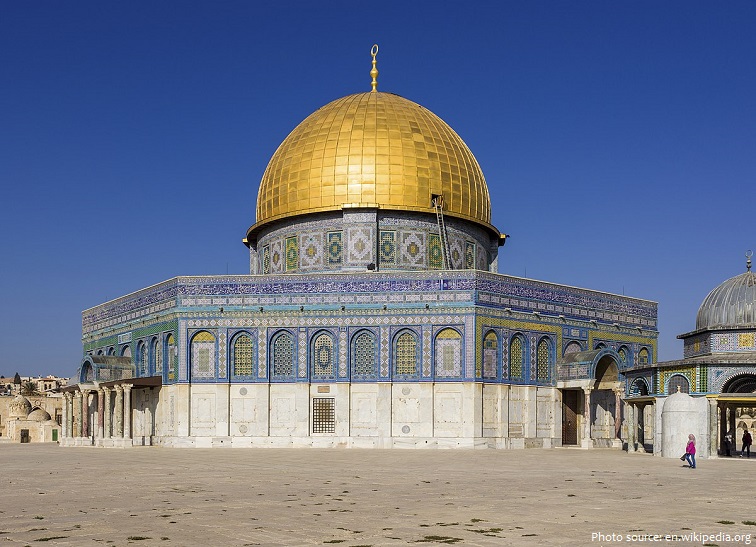
The Tower of David also known as the Citadel is an ancient citadel located near the Jaffa Gate entrance to the Old City of Jerusalem. The citadel that stands today dates to the Mamluk and Ottoman periods. It was built on the site of a series of earlier ancient fortifications of the Hasmonean, Herodian, Byzantine and Early Muslim periods, after being destroyed repeatedly during the last decades of Crusader presence in the Holy Land by their Muslim enemies. It contains important archaeological finds dating back over 2,500 years including a quarry dated to the First Temple period, and is a popular venue for benefit events, craft shows, concerts, and sound-and-light performances.
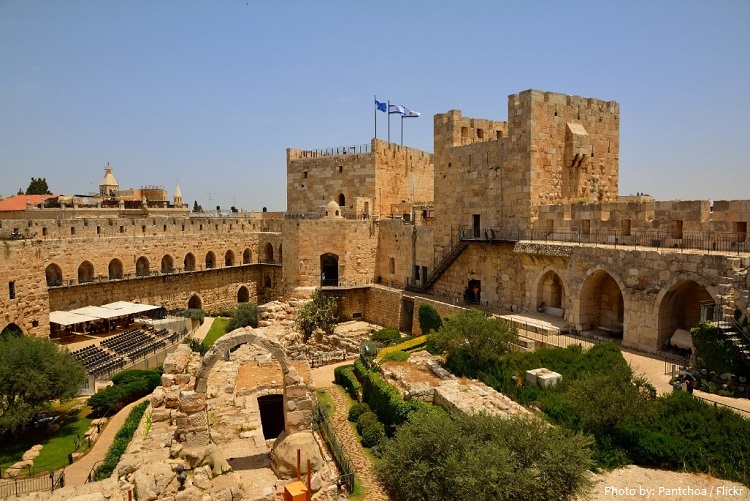
The Israel Museum was established in 1965 as Israel’s foremost cultural institution and one of the world’s leading encyclopedic museums. It is situated on a hill in the Givat Ram neighborhood of Jerusalem, adjacent to the Bible Lands Museum, the Knesset, the Israeli Supreme Court, and the Hebrew University of Jerusalem.
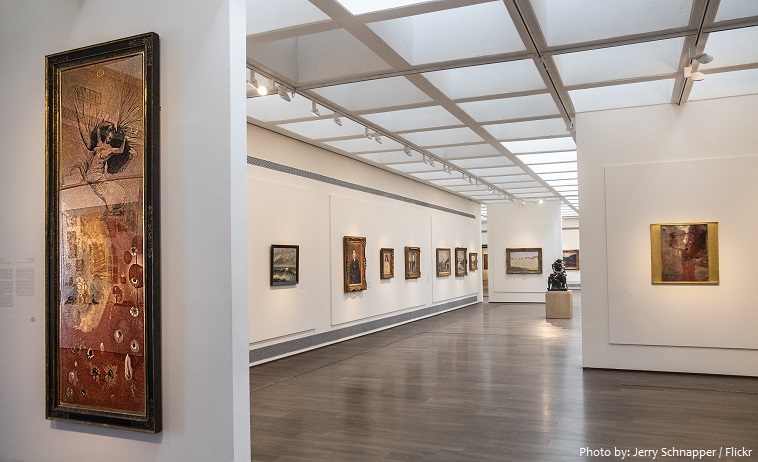
The Mount of Olives or Mount Olivet is a mountain ridge east of and adjacent to Jerusalem’s Old City. It is named for the olive groves that once covered its slopes. The southern part of the Mount was the Silwan necropolis, attributed to the ancient Judean kingdom. The mount has been used as a Jewish cemetery for over 3,000 years and holds approximately 150,000 graves, making it central in the tradition of Jewish cemeteries.
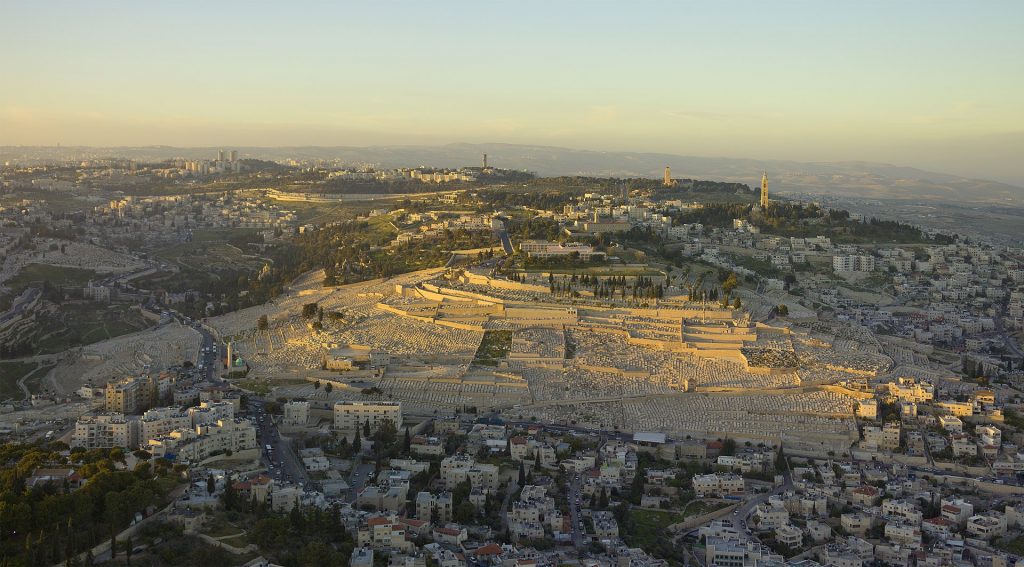
The city is characterized by a hot-summer Mediterranean climate, with hot, dry summers, and mild, wet winters. Snow flurries usually occur once or twice a winter, although the city experiences heavy snowfall every three to four years, on average, with short-lived accumulation.
Jerusalem is exceptionally rich in birdlife, which includes 70 resident species and about 150 winter visitors.
Water supply has always been a major problem in Jerusalem, as attested to by the intricate network of ancient aqueducts, tunnels, pools and cisterns found in the city.
The two most popular sports are football (soccer) and basketball.
